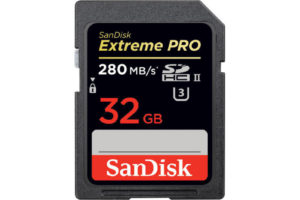- in Computer , Gear by Bobby Owsinski
Everything You Wanted To Know About SD Cards
 We live in a glorious age where we’re no longer tethered to large bulky hard drives for capturing audio and pictures in the field. Today, so much of our audio lives on the simple, yet not always understood SD card, a true wonder of electronic storage. The problem is that we’re faced with a wide variety of purchase possibilities that can be totally confusing, especially when the price seems too good to be true. Here’s a bit of a guide about what’s what in the SD world.
We live in a glorious age where we’re no longer tethered to large bulky hard drives for capturing audio and pictures in the field. Today, so much of our audio lives on the simple, yet not always understood SD card, a true wonder of electronic storage. The problem is that we’re faced with a wide variety of purchase possibilities that can be totally confusing, especially when the price seems too good to be true. Here’s a bit of a guide about what’s what in the SD world.
What Is An SD Card?
SD stands for “Secure Digital” and was developed jointly by SanDisk, Panasonic and Toshiba specifically for use in portable devices. It was launched in 1999.
Capacity
The card’s capacity depends on the filesystem used to store the data.
Plain SD cards store up to 2GB using FAT12 and FAT16 systems.
SDXC (extended capacity) cards hold capacities from 32GB up to 2TB (yes, that’s terabytes) using exFAT.
While it might be tempting to buy as large an SDXC card as you can afford, before sure to check to make sure that your recording device actually supports this type of card first.
Also, many engineers actually prefer using multiple smaller capacity cards instead of one large one to spread a project over in case one fails.
Transfer Speed
We’ve all been there when we’ve tried to back something up and it takes forever, even though it’s a new card. The problem is that you can’t always depend on speed numbers like “2000x” to be accurate. That said, there is a buss speed number written on the card (Roman numeral I, II, or III) that does give you a more accurate idea of the actual transfer speed.
UHS (ultra-high speed) I uses just a single row of pins on the back of the card to transfer data up to a maximum of 104 MBps.
UHS II includes a second row of pins to deliver performance up to 312 MBps in half duplex mode, and 156 MBps in full duplex (simultaneously writing and reading to the card).
UHS III also uses two rows of pins, delivering theoretical read throughput of up to either 312 MBps or 624 MBps, both in full duplex mode. Once again, make sure that your recording device supports UHS II or III before purchasing.
SDXC cards also get the UHS (ultra-high speed) rating, which is either a 1 (10 MBps) or a 3 (30 MBps) inside a U-shaped logo.
As you can see, all SD cards are not made equal, so don’t fall for a great deal on a high capacity card if it will be old and slow, or something new and cool that you’re device can’t use.
For a ton of additional information on SD cards check out the wiki page or the SD Association page.

